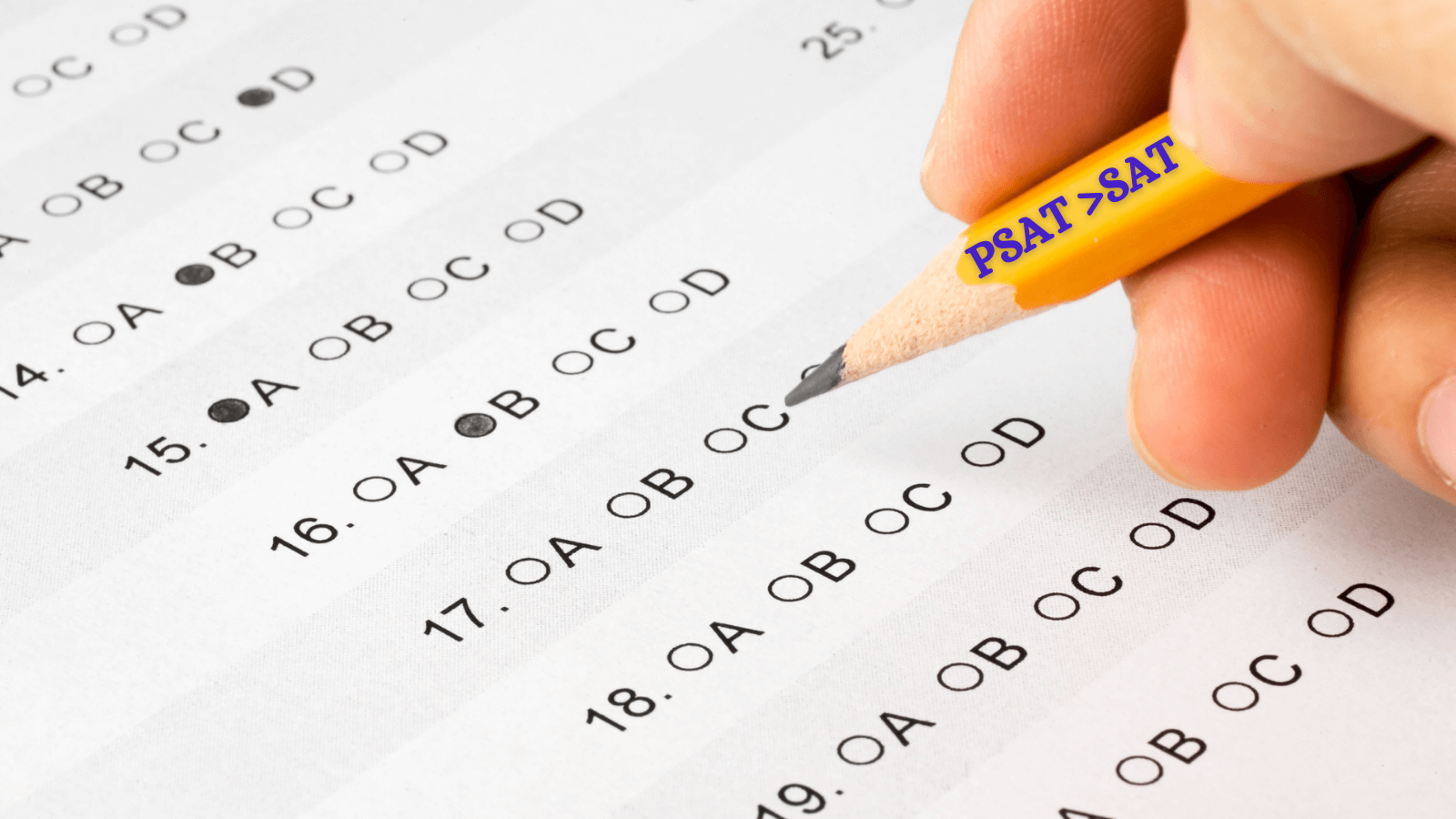Student-centric advice and objective recommendations
Higher education has never been more confusing or expensive. Our goal is to help you navigate the very big decisions related to higher ed with objective information and expert advice. Each piece of content on the site is original, based on extensive research, and reviewed by multiple editors, including a subject matter expert. This ensures that all of our content is up-to-date, useful, accurate, and thorough.
Our reviews and recommendations are based on extensive research, testing, and feedback. We may receive commission from links on our website, but that doesn’t affect our editors’ opinions. Our marketing partners don’t review, approve or endorse our editorial content. It’s accurate to the best of our knowledge when posted. You can find a complete list of our partners here.
How Long Does the SAT Take?

 By
Lisa Freedland
By
Lisa Freedland 
Lisa Freedland is a Scholarships360 writer with personal experience in psychological research and content writing. She has written content for an online fact-checking organization and has conducted research at the University of Southern California as well as the University of California, Irvine. Lisa graduated from the University of Southern California in Fall 2021 with a degree in Psychology.
Full BioLearn about our editorial policies

Cait Williams is a Content Writer at Scholarships360. Cait recently graduated from Ohio University with a degree in Journalism and Strategic Communications. During her time at OU, was active in the outdoor recreation community.
Full BioLearn about our editorial policies

Caitlyn Cole is a college access professional with a decade of experience in non-profit program and project management for college readiness and access organizations.
Full BioLearn about our editorial policies

Maria Geiger is Director of Content at Scholarships360. She is a former online educational technology instructor and adjunct writing instructor. In addition to education reform, Maria’s interests include viewpoint diversity, blended/flipped learning, digital communication, and integrating media/web tools into the curriculum to better facilitate student engagement. Maria earned both a B.A. and an M.A. in English Literature from Monmouth University, an M. Ed. in Education from Monmouth University, and a Virtual Online Teaching Certificate (VOLT) from the University of Pennsylvania.
Full BioLearn about our editorial policies

With the SAT moving to a digital format, the time that you have to complete the test will also be changing. But we’re not here to only talk about the length of the test. We’ll also talk about waking up early, getting your test materials ready, and when to arrive at the test center. So, to find out how long the SAT is, how early you should arrive, and how to budget your time when taking the test, keep on reading!
Don’t miss: Scholarships360’s free scholarship search tool
How long is the SAT?
Great question! In total, the SAT takes 2 hours and 14 minutes, which does not include the 10 minute break between sections. The test includes two sections, a reading and writing section and then a math section. The schedule of the SAT should look like this:
| Section | Time | Number of Questions |
| Reading and Writing (Section 1) | 32 minutes | 27 |
| Reading and Writing (Section 2) | 32 minutes | 27 |
| Break | 10 minutes | N/A |
| Math (Section 1) | 35 minutes | 22 |
| Math (Section 2) | 35 minutes | 22 |
Not too bad, right? Just don’t plan on finishing (or leaving) earlier than the 2 hours and 24 minutes allotted. You’re not allowed to move onto the next section until the time is up. Your test will likely be disqualified, and you will be immediately dismissed from the testing room if you do so. Thus, if you finish a section early, we highly recommend using that extra time to go back and double- (or triple-) check your answers!
And, if you’re wondering where the optional essay went, that is no longer being offered (as of June 2021). That means you have one less thing to worry about. You’ll now have more time to prepare for the other test sections.
See also: Is the SAT hard?
How early should I arrive for the SAT?
Unlike the case with the tests you typically take at school, you will not be allowed to take the SAT if you arrive late. So, it is incredibly important that you arrive at the testing site on time. As the doors open at 7:45 A.M., this would ideally mean arriving by around 7:30 AM so you can avoid any last-minute rushes and unnecessary stress (or 7:45 at the latest!).
How will you get to the test site?
Make sure you have a transportation plan confirmed ahead of time. It would be a shame to miss your test simply because you overlooked a detail like transportation. You may also want to check the weather and plan extra travel time for any severe weather!
Set your alarm(s!)
In addition to a transportation plan, it’s a good idea to set multiple alarms in the morning. Even if you’re a morning person, consider setting another alarm or asking a family member to wake you up. You want to avoid being in a rush as much as possible so that you’re in peak test-taking mode.
Time zones? No worries!
And, if you’re wondering about time zones – no need to worry! The SAT is administered at the same local time. So, no matter where you are, just try to make it to your testing site by 7:45 AM at the latest (but earlier is better!). However, the doors to the testing rooms typically won’t actually close until 8 AM. So, keep in mind that if you’re not there by 8:00, you may not be allowed into the room.
Also see: SAT test date calendar
When does the SAT start?
Although the doors close at 8:00, the SAT generally starts between 8:30 and 9 A.M. This allows time for registration, to get students situated in their testing rooms, and to distribute the necessary testing materials (and make sure that students don’t have electronic watches). Thus, the exact starting time will likely differ for every location (and date), as it depends on how long it takes one’s testing site to get everything prepared for the exam.
No matter where and when you sign up for the exam, no more students will be allowed into the testing site once testing has begun.
Related: SAT Subject Tests are no more
Is there a fifth section on the SAT?
While there is sometimes a “fifth” section of the SAT, it’s never scored and does not count towards someone’s final score. Rather, it is an “experimental” section, used by the College Board to determine whether new test items should be used on future SAT exams. Thus, this section of the test is essentially a “pre-test” of new test items, and only takes 20 minutes to complete. If a particular exam does include a fifth section, then test proctors or supervisors will let students know before the test begins.
Related: How to improve your SAT score
When does the SAT end?
Students should expect to finish the exam between 11 and noon. The exact end varies slightly due to the time it takes to do set up and instructions in each room and whether the site is taking an exam with a fifth section. Once the exam is over and all tests have been finished, students’ electronic devices and backpacks will be returned and students will be allowed to leave.
Also see: ACT vs SAT: How to decide which test to take
Time management strategies for the SAT
You now know when each section of the SAT begins and ends, and approximately how long you get to complete each section. But how can you make sure that you finish each question within the allotted time? Well, luckily for you, we have a few great time management (and general test-taking) strategies to prepare yourself for the exam! Keep these in mind when preparing or (and taking) the SAT:
- Be familiar with each section’s instructions before taking the exam
- You don’t want to have to waste time reading directions when you could be answering questions!
- Answer the questions you know first. Then, go back to the harder ones later
- Use the process of elimination
- Answer every question – there is no penalty for guessing wrong
- Budget your time!
- Bring a watch or timer if you need to (but not an Apple watch – those aren’t allowed)
- Fully understand each question before answering it
Related: Tips to reduce test anxiety
What if I run out of time?
Try to answer all of those questions that you can figure out without much difficulty first. As for those you’re completely clueless about – take your best guess! Wrong answers on the SAT do not count against your score. In other words, you don’t lose points for answering questions incorrectly. Rather, you can only gain points for guessing questions correctly. So, remember to leave no answer blank – even if you have no clue.
And that’s it! We hope that you’re now feeling reassured about the SAT and feel confident that you can finish (and begin) on time. Good luck, and we wish you the best!
Additional resources
Scholarships360 offers so many SAT (and ACT!) resources for students! Check out our guide on free SAT study resources, and on tips for the SAT reading and math sections! to start. Learn how to improve your SAT score in 6 steps and ease your pre-test jitters with our guide to reduce test anxiety.
Scholarships360 is here to help you through every step of the college application and admissions process. That includes deciding how many colleges to apply to, how to make your application the best it can be, and how to answer the Common App essay prompts. If you’re taking the SAT in your junior year, you can also check out our guide for making the most of your summer before senior year. Good luck, and don’t forget to apply for all the scholarships you are eligible for!
Frequently asked questions about how long the SAT takes
Are there accommodations for extra time for students with disabilities?
How should I manage my time during the SAT to ensure I finish every section?
What happens if I run out of time on a section?
Is there a recommended time to arrive at the test center before the SAT begins?




 SAT" printed on his pencil">
SAT" printed on his pencil">
